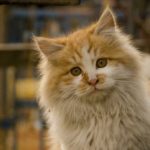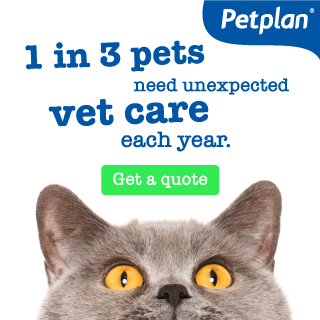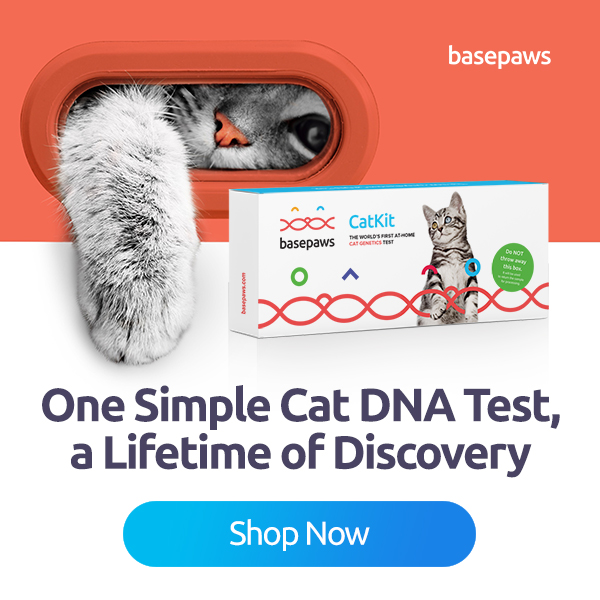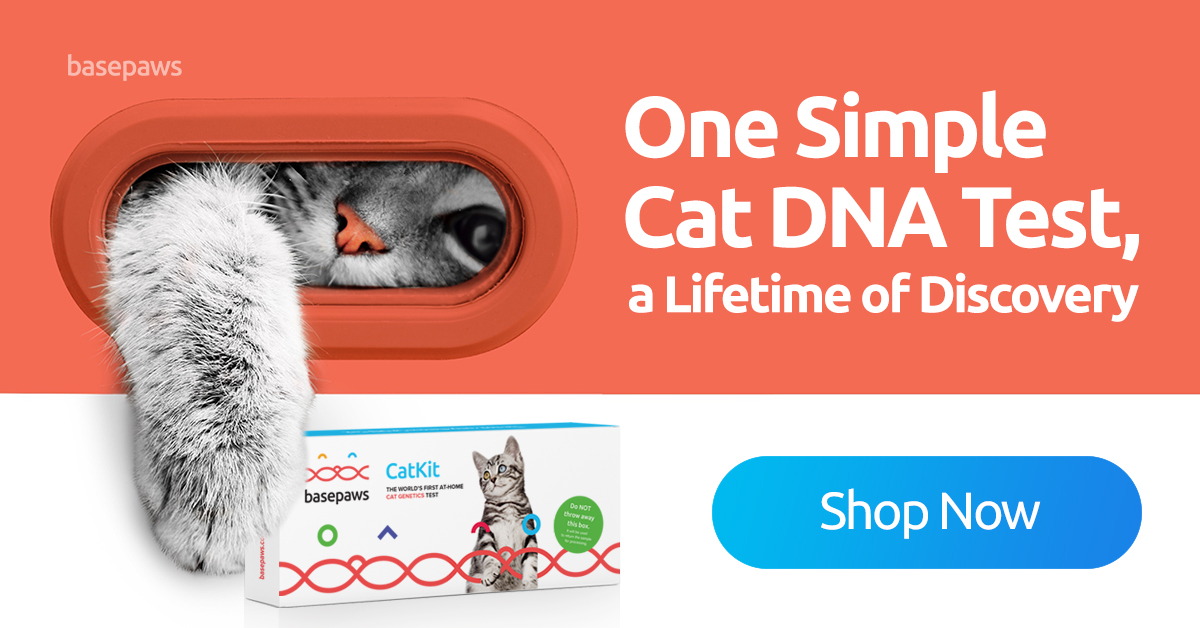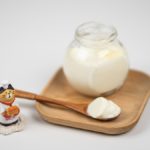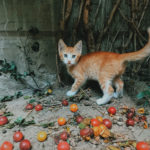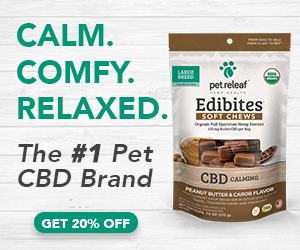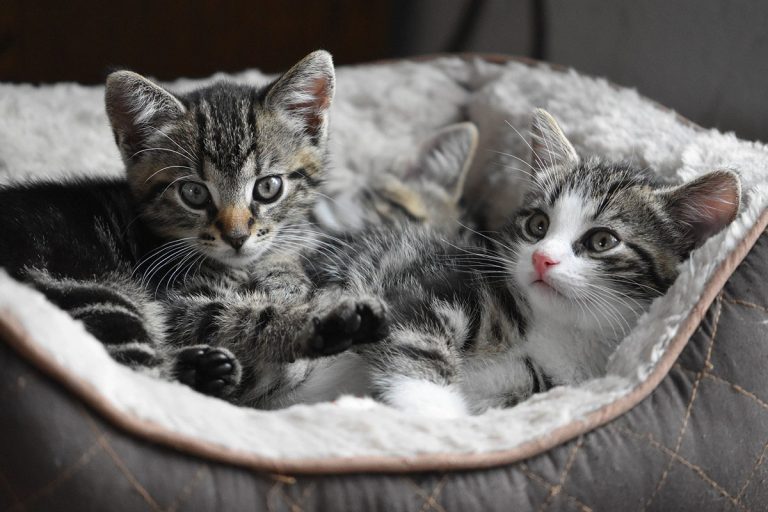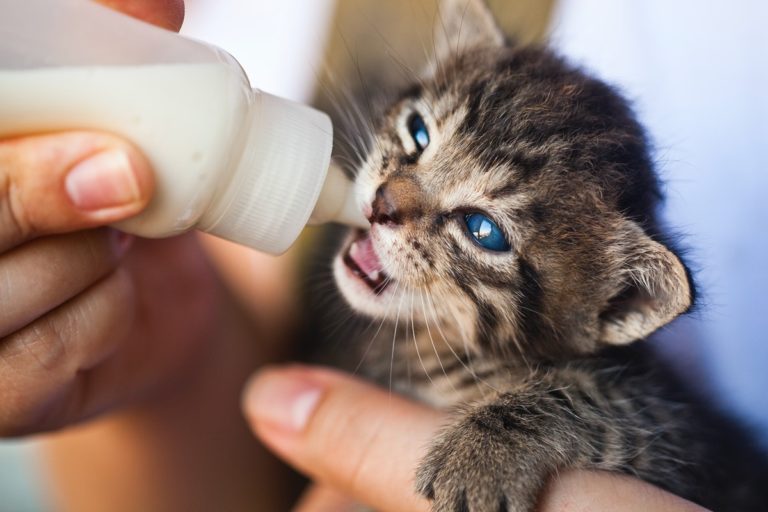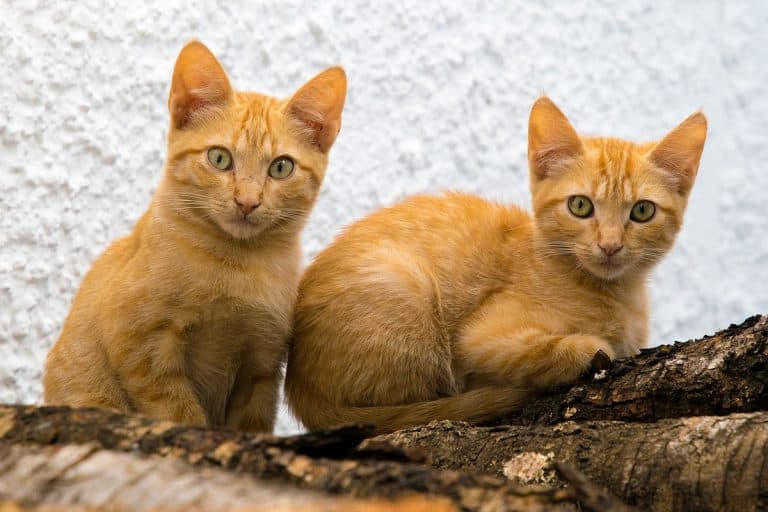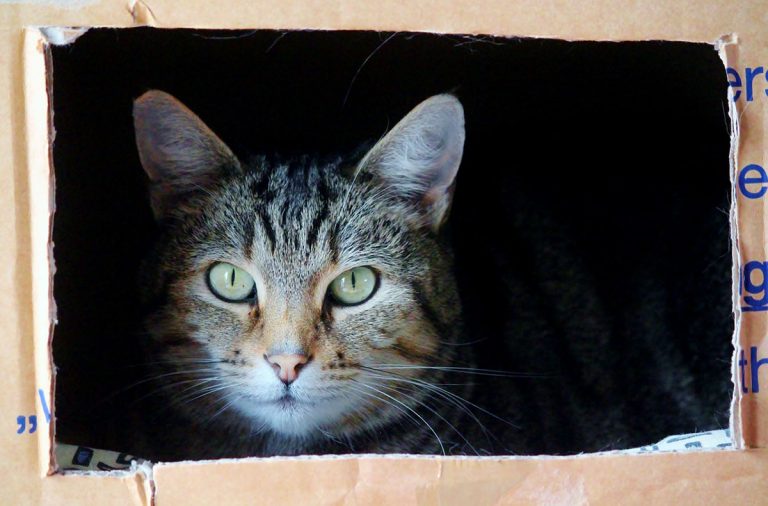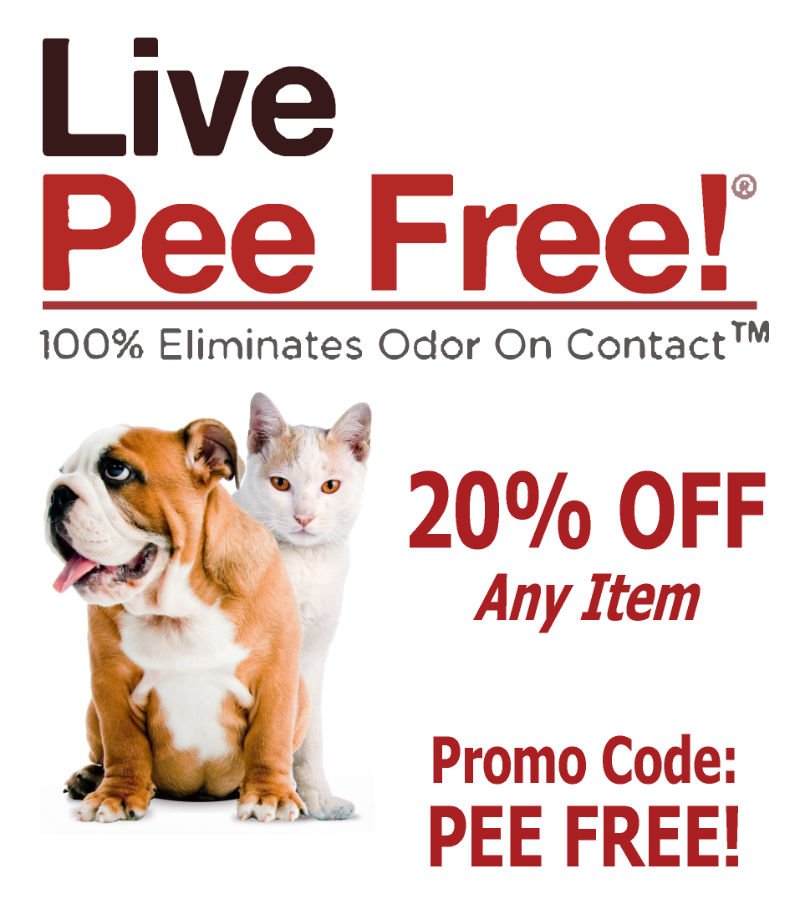A cat’s diet should be tailored to their specific needs, which is why it can seem tricky for cat owners to find the right food. But worry not! We’ve compiled a complete guide to feline nutrition to help you and your kitty work together and answer that mealtime question: “What should I feed my cat?”
DISCLAIMER: This post may contain affiliate links. If you click one of these links and decide to make a purchase, we may receive a small commission. This comes at no extra cost to you and helps to keep the site alive and up to date. If you want more information, please review our Privacy Policy. Thank you for your support!
Feline Nutrition 101
First, let’s get into the basics of feline nutrition. What food do cats eat, and how much? What shouldn’t you feed your cat? Read on to find out.
What Should I Feed My Cat?
Believe it or not, a lot of controversies exist about what to feed a cat. Raw versus cooked food. Grains or no grains. Homemade or store-bought. And then there are a whole bunch of additives that people don’t agree about as well.
Cats in the wild are obligate carnivores, which means they need to eat meat to survive. Raw meat, organs and bones. Sure, you might see them nibble on some grass from time to time, but this is only to get rid of hairballs. They don’t ingest the grass as nutrition and actually have a very low tolerance for carbohydrates. The only grains and vegetables a cat ingests in the wild come from the innards of their prey.
Related Post: Is Freeze Dried Food Good For Cats?
Freeze dried cat food is a healthy alternative to normal dry kibble. Find out why you should definitely consider switching your cat to freeze dried food.This simple fact has a lot of cat owners convinced that they should feed their indoor cats a raw diet. Some of them even choose to make it themselves, although there are plenty of raw commercial options available these days. Cats that are fed only raw foods are less prone to illnesses such as obesity and diabetes.
However, there are some downsides to a raw diet. Raw meat can contain pathogens like E. coli and salmonella. While healthy cats can easily digest and neutralize these, cats with poorer health and humans (!) cannot. If you choose to feed your healthy cat an all natural, raw diet, then please take proper precautions by wearing gloves while preparing it and thoroughly cleaning the area where you handle the food, before and after. Keep the raw meat away from small children and immunocompromised people at all times.
Related Post: Is Pet Insurance Worth It For Indoor Cats?
Is pet insurance worth it for indoor cats? Read this guide to learn about pet insurance for cats and calculate if it is really worth it for your indoor cat.
If you choose to bypass the raw food and buy whatever’s available at your local store, there are some other things to consider. You have a choice to feed your cat dry food, wet food, or a combination of the two. Dry foods are usually made almost exclusively from grains. As said, cats don’t process carbohydrates very well. For this reason I would recommend a diet of (mostly) wet food. This will also help your cat to get the moisture she needs, as some kitties have trouble drinking enough on their own.
What is most important is that you feed your cat a healthy, balanced diet. If you are getting your cat food from the store, check to see that the packaging states that it is “100% complete and balanced”. With this label, you are assured that the food you are giving to your cat meets all the necessary standards for a healthy cat life.
A WORD OF CAUTION: Always be careful when introducing your cat to a new food. The change in nutritional composition can cause digestive upset or allergic reactions, so it is best to take it slowly. Give her only a bit of the food at first, combined with her old food, and monitor how well your cat does on it. If you see any signs of an allergic reaction (difficulty breathing, rashes, elevated heart rate, diarrhea, vomiting) switch back to her old food and contact your vet immediately.
How Much Should I Feed My Cat?
The amount of food that your cat needs is dependent on her age, as well as her weight, health and activity level. On top of that, the quality and type of food also play a part. If you feed her a high quality diet with lots of nutrients, she won’t need as much of it to be full.
Whatever food you choose for your kitty, make sure you stick to a consistent feeding schedule. Cat owners may choose to free feed their cat, leaving a bowl of dry food out for them all day. This is fine, if your cat is able to self-moderate her feeding.
However, many kitties are too tempted by an all-access buffet like this and end up with obesity. If you do decide to free feed, measure out the day’s quantity so your cat won’t overeat. This will also prevent the food from getting stale. Otherwise, stick to two feedings a day: one in the morning and one at night. Wash her bowls every day with water and detergent to prevent a build-up of bacteria.
To find out exactly how many calories your cat needs, whether she needs to slim down, bulk up, or stay right where she is, check out our article How Many Calories Does My Cat Need? and use our convenient Cat Food Calculator.
Ideal Cat Food Composition
Based on the eating habits of cats in the wild, a perfect cat diet has the following composition. The numbers express the percentage of total caloric intake.
| Cats are obligate carnivores, which means that their digestive system is designed to process meats. Therefore, a cat should get most of its energy from animal protein. To keep your cat healthy, look for a cat food with a crude protein content of at least 25%, or 40% expressed in terms of caloric intake. | |
| Animal fats form another essential part of your cat's diet. Fats provide more calories per gram, so the crude fat content should be lower than the protein content to prevent weight gain. Aim for a crude fat content of 20-24%, or between 43% and 54% of the caloric intake. | |
| Carbohydrates do not have a natural place in a feline's diet. Overconsumption of carbs can lead to diabetes and obesity. In the wild, the only carbs a cat ingests come from the innerts of a caught prey. Choose a food with at most 15% carb content, or 12% of the caloric intake. Though less is definitely better. |
The only real reason to (temporarily) deviate from this ideal is if your cat has a condition that asks for a specialized diet. Unfortunately, since many commercial cat foods contain too many carbohydrates and not enough protein, you'll likely find yourself searching for the food that simply comes closest, even for healthy cats.
Want to know if your cat food measures up? Or are you looking for a healthier alternative? Check out our Cat Food Database for in-depth reviews of 900+ different cat foods and their nutritional quality.
Fussy Eaters
Some cats can be very fussy about their food. My girl Lordi will snub her nose and walk away if it’s not up to her standards. Fourteen years in and I’m still figuring out what exactly those standards are, because they seem to change daily. The only thing I can say for sure is that she doesn’t like salmon.
You might be experiencing the same with your cat. How do you get your picky feline to eat that expensive food you got her? One thing you can try is heating it up. Just pop it in the microwave for 5 to 10 seconds, not too long. Or simply add some warm water. The heat will make the food more fragrant and might be enough to convince your kitty to eat it.
No matter what you do, try to stick to a single brand of cat food, because different brands have different nutrients and additives. Switching your cat’s diet up like that every few days can result in an upset tummy and diarrhea. Find a brand, or maybe two, that she likes and that comes in different flavors. If this still isn’t enough variety for your cat, try mixing different flavors and textures. I find that my cat eats a lot better when I mix a pack of chunks in gravy with some paté. If I give her either of those separately, she will hardly touch them.
Cat Treats
Treats are not an essential part of a cat’s diet, though they are a great tool when training her. Giving her a little something extra every now and then will also help to strengthen your bond with her. Be careful to choose a treat that is made for cats and adheres to all the requirements you impose on her normal food as well. But remember, treats have calories too. Go for a low-cal variety and don’t feed her too much of it.
You might be tempted to treat your cat to some of your own food from time to time. A piece of roasted ham here, some leftover chicken breast there. The problem with this is that food prepared for humans tends to contain way too much salt, flavorants and calories for a cat. The piece you give her may look small to you, but it can cause a huge upset in her balanced diet. And diarrhea is no treat for you, or the cat.
What Food Is Poisonous To Cats?
There are many foods your kitty shouldn’t eat, but some are outright toxic for cats. Like alcohol, for instance. Even a small dose can cause irreversible brain and liver damage. So keep your micro-brew away from kitty. Raw dough with yeast can also cause alcohol to be produced in the stomach when ingested. If your cat ingested even a tiny amount of alcohol or yeast, take her to the vet immediately.
Another dangerous food group, one that you might not expect, is dairy. Cats naturally don’t drink milk after they stop nursing with their mother, and many adult cats are actually lactose intolerant. Feeding them cheese or other dairy products won’t kill them, but it will definitely upset their stomach. Yogurt, on the other hand, is low in lactose and perfectly fine for cats, when fed in moderation.
Related Post: Homemade Probiotic Yogurt For Cats In 4 Easy Steps
Making your own homemade probiotic yogurt for cats is easy! Just follow these 4 steps to create a healthy, all natural treat for your cat.Also don’t give your cat the fat trimmings of a piece of meat. Although raw meat is a natural part of their diet, too much fat can cause gastric problems. It may even lead to feline pancreatitis, a gastrointestinal disorder that is often fatal. One of my cats, unfortunately, suffered from this nasty disease. I can tell you that it was a rough two years of expensive vet visits, medication and prescription diets, sadly to no avail.
Chocolate contains several substances toxic to cats, one of which is caffeine. It can cause breathing difficulties, heart problems, muscle tremors and even seizures. Keep your cat away from anything that contains caffeine, including coffee, tea and energy drinks.
Grapes and raisins cause problems for dogs, and some cats. Although not all cats seem to develop symptoms, there are reports of them becoming severely ill after eating this fruit. Look out for vomiting, lethargy and abdominal pain if your feline got into the fruit bowl. If you see any of these signs, take her to the vet.
Last, but not least, onions and garlic are also not very healthy for cats. A small amount will do no harm. But if your kitty eats too much of it, it can damage her red blood cells and cause anemia. There are actually some cat foods on the market that contain garlic. Do not feed these to your cat.
Related Post: Can Cats Survive On A Vegan Diet?
Can cats survive on a vegan diet? In short: no. Read this article to learn about the risks associated with vegan diets for cats and why cats can’t be vegan.Age-Specific Requirements
Now that you know all the basics about feeding your cat, let’s look at how her needs change throughout the stages of her life.
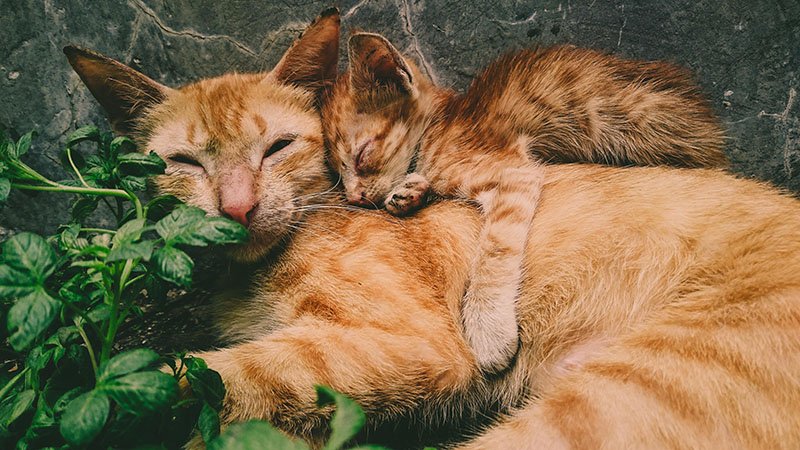
Kittens (0 to 6 months)
During the first four weeks of their lives, kittens get all the nutrients they need from their mother’s milk. You can start introducing food after these four weeks. A kitten’s teeth and stomach need some time to adjust to solids, so it’s best not to start with dry food immediately.
Luckily, there are plenty of cat foods on the market that are especially formulated for kittens. Look for cat foods that explicitly state that they meet the nutritional requirements of kittens as established by the appropriate institutions in your country. These foods tend to contain higher levels of protein and some vitamins, suited to your kitten’s rapid growth. They need about 3 times the amount of energy than a normal cat, so expect to feed them 3 to 4 meals a day.
When you are ready to start with dry food, soak the kibble in a bit of water. This will make it easier for your kitten to eat and ensures that she gets enough moisture.
Adolescent Cats (6 months to 2 years)
Adolescent cats are still growing, so their nutritional needs are very similar to those of kittens. They also eat more than adult cats. Feed your younger kitties 3 times a day, and slowly work it down to 2 times a day by the time they are 2 years old. Choose a food for younger cats (not kittens) with lots of high quality protein.
Adult Cats (2 to 7)
Adult cats have a lower metabolism than both younger and older felines. They are also done growing, so they don’t need food for growth. Only for maintenance of their health and energy. Adult cats should be fed twice a day.
When your cat is pregnant or nursing a litter of kittens, she uses up more energy and, consequently, needs to consume more calories. Take the feedings up to 3, or even 4 times a day in a situation like this, depending on your cat’s energy level.
Mature and Senior Cats (7+)
As cats age, their metabolism starts to accelerate again. This may cause your senior cat to have an increased appetite. Some even start to lose weight. If you notice any changes in an older cat’s feeding and drinking habits, it’s best to bring her to the vet for a check-up. You can further support your cat’s health by feeding her food specifically formulated for older cats.
A good diet for senior cat diets contains more dietary fiber and more moisture. It is made from highly digestible ingredients, such as quality protein and animal fats. Food with grains should be avoided especially for older cats, since these can contribute to gastrointestinal issues, such as constipation, and diabetes.
Most dry cat foods have grains as their main ingredient. If your cat is getting older, switch her kibble for a grain-free variety, or feed her only wet food. If you do choose to stick with grain-based dry food, make sure your cat has plenty of access to fresh water and monitor her drinking habits. If she drinks too little, she will get dehydrated. If she starts drinking significantly more, it could be a sign of diabetes or chronic kidney disease.
For a complete overview of a senior cat’s nutritional requirements, please read our guide on the best diet for older cats.
Related Post: Top 8 Most Common Illnesses In Older Cats
Get familiar with the top 8 most common illnesses in older cats, so you know what to prepare for and how likely your elderly cat is to fall ill.Feline Food Allergies
Just like you and me, our cats can develop food allergies. An allergy is usually not immediately detectable. Only if your cat is exposed to the allergen repeatedly over a period of time will you start to see symptoms like gastric upset, coughing, sneezing and/or excessive scratching.
Most feline allergies become apparent between the ages of 2 and 6. The foods that cats can get allergic to might not be the ones that you would expect. Most allergic cats have an intolerance for a specific type of protein, like beef, chicken or fish. Others may be allergic to dairy or eggs.
Diets For Specific Illnesses
No matter how well you feed your kitty, there is always a chance that she will get ill. Common feline diseases include diabetes, hyperthyroidism, feline immunodeficiency virus (FIV), heart disease, kidney and urinary tract issues and obesity. Small changes in the diet of a sick cat can make a real difference for her health. If your cat’s health has been compromised, talk to your vet about what food to best feed her.
I do have to add a word of caution here. From my own experience, veterinarians usually recommend a prescription diet that they usually also sell in their practice (what a coincidence). I am not a fan of these prescription diets, and neither was my sick cat. After some research, I found that at least some of these diets (including the ones that my kitty was prescribed) did not actually meet all of her nutritional requirements.
Don’t get me wrong, I think it’s great that these diets exist. However, most of them are only meant to get your cat through short periods of illness. If your cat is chronically ill, ask your vet about the long term nutritional requirements specific to your cat. Then use this information to find a food that meets those requirements. It might be a prescription food, it might not. Either way, you can rest assured that you are giving your cat everything she needs to get healthy.
Final Thoughts
Finding the right cat food can be a challenge. But once you do, your feline will have the best shot at a healthy cat life. Use the information we have given you as a guide and find what works for you and your kitties. If you detect some discomfort or outright sickness at any point in your cat’s life, always consult with your vet.

